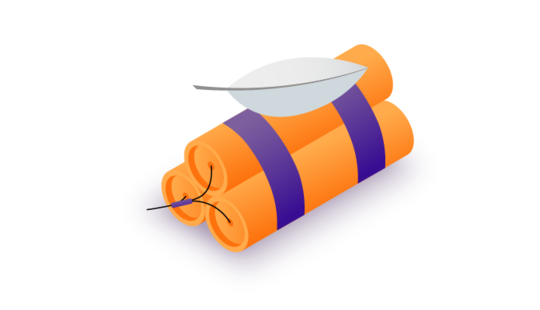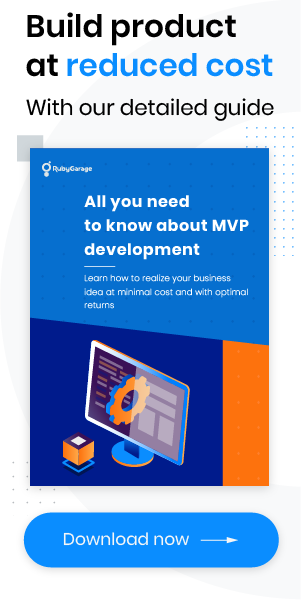-
Product Management
Software Testing
Technology Consulting
-
Multi-Vendor Marketplace
Online StoreCreate an online store with unique design and features at minimal cost using our MarketAge solutionCustom MarketplaceGet a unique, scalable, and cost-effective online marketplace with minimum time to marketTelemedicine SoftwareGet a cost-efficient, HIPAA-compliant telemedicine solution tailored to your facility's requirementsChat AppGet a customizable chat solution to connect users across multiple apps and platformsCustom Booking SystemImprove your business operations and expand to new markets with our appointment booking solutionVideo ConferencingAdjust our video conferencing solution for your business needsFor EnterpriseScale, automate, and improve business processes in your enterprise with our custom software solutionsFor StartupsTurn your startup ideas into viable, value-driven, and commercially successful software solutions -
-
- Case Studies
- Blog
How to Launch Your Startup Successfully: Soft vs Hard Launch
Build something 100 people love, not something 1 million people kind of like.
Product managers and marketers have a great deal of responsibility for the successful launch of a startup product. When delivering your product to the market, you can opt for one of two strategies: a soft launch or a hard launch. In this article, we compare these two popular techniques for delivering a new product to the market and see how you can do it with the least investment possible. What are the benefits and pitfalls of these approaches? Let’s dive in and find out.
What is a soft launch?
A soft launch is when a company introduces its product to the market discreetly, not drawing attention to it. Usually, it’s released to a small fraction of the target audience or within a limited geographic area. The aim of a soft launch is to check if you need to make changes to the product before launching it to the whole market.
A good example of a quick and successful soft launch is Pokémon Go. In 2016, Niantic, the company behind the successful augmented reality app, chose a soft launch strategy. The app first came out in Australia, New Zealand, and the United States. Niantic wanted to test out and polish the app features and interface. However, Pokémon Go turned out to be so big that its success made Niantic do a full-fledged commercial launch within days of the soft launch.
When is a soft launch the best solution?
Not all products need a soft launch before going big. Your product might benefit from a soft launch if you check any of the items on this list:
- You’re a small team or are entering the market for the first time
- You need to test the viability of your product
- You need to refine your product’s features with a small audience
- You need to get your first feedback from users
- You want to check if the price is acceptable
- You need to A/B test different features
- You’re having a hard time deciding on the amount of marketing you really need to engage in
Pros of a soft launch
Gradual presentation of the product
One of the main advantages of gradually presenting a product is having full control over who you target, what platforms your users run your app on, and tweaking on the go. When you limit the number and type of people who use your app, you can better control your messaging and monitor the behavior of real users. You can broaden your audience and scale your product step by step, taking notes and making necessary alterations. There’s no need to spend all your money at once. Instead, invest a little at every stage of the soft launch as you get traction and start retaining users.
Increased user retention due to quick feedback
Another benefit of a soft launch is the ability to iterate your product thanks to quick user feedback. You can know when users are leaving so you can tweak your app or game immediately. This approach works flawlessly for new products that haven’t found their product–market fit yet. In this case, you can take a few steps back at any moment, fine-tune faulty features, or even pivot your product.
Customer targeting
An important part of a soft launch is segmenting your users into cohorts, from the highest to the lowest value. This way you can see whom to target first and observe the results in a closed environment. Having gathered the results, you’ll be able to target better with every release, increasing your LTV (customer lifetime value) and lowering your CPA (cost per action). Additionally, your customers will be happy to experience the new product before the rest of the market.
Tuning and optimizing key features
For any product, the soft launch is important in terms of tuning the interface and optimizing the key features. Sometimes, the features you hope will spark your users don’t live up to the expectations and fail to impress. Do a soft launch to find out what exactly prevents users from enjoying the product and what features users want.
See results fast
As the product for the soft launch is small in scope, it takes considerably less time to see the first results and gauge your customers’ mood after the release. Usually, several weeks is more than enough to collect the first data.
Cons of a soft launch
Might be a lot of overhead
Although a soft launch is cheaper than a hard launch, you’ll need a substantial budget to gain users. Consider development costs, hosting fees, initial marketing, and the cost of submitting your app to an app store. These expenses can run into the thousands of dollars depending on your product, the estimated launch time frame, and the number of users targeted in your secondary market.
Not the first to the market
This is a high risk that product owners face when opting for a soft launch. The product might lose its competitive advantage on the market if a similar product with the same target audience gets to the primary market faster.
What is a hard launch?
A hard launch is when you reach the entire target audience and make a big bang introduction, evoking excitement around your product. The main aim of a hard launch is to spread awareness of the product to as many target users as possible, trying to persuade them to purchase it. To make this happen, product owners usually have a detailed marketing plan that includes spending to create an atmosphere of mystery and hype around the product, posting sneak peeks, creating a buzz on social media, and organizing lavish events.
Apple is the genius of big bang hard launches. Apple sold over 10 million iPhone 6 and iPhone 6 Plus devices within just three days of the launch. Even if you aren’t as big as Apple, you still can learn from their marketing campaigns.
When is a hard launch the best solution?
The days when a hard launch was the most common way software development companies released new products are gone. Nowadays, a rare company throws epic parties to celebrate a successful launch. However, there are situations when you should go all-in:
- You’re 100% sure you can deliver your product on time
- Your product is stable and reliable from a technical standpoint
- You’ve eliminated all critical bugs and solved various issues
- You’re a large and trusted development company
- You have a detailed marketing spending plan
- You’ve created enough buzz about the upcoming product to result in high demand
Pros of a hard launch
Customers like finished products
Considering the competition on the market, you’ll get noticed with an innovative product. Moreover, thanks to a strong marketing campaign, your audience may already anticipate your product and be more likely to try it out. Consequently, you’ll get a fast return on investment (ROI).
Competitive advantage
With a hard launch, you can have a considerable amount of time without a big competitor on the market. Even if you face information leaks, it’ll take time for your competitors to replicate your product and catch up. You still have the advantage of being the first to come to the market with an original and stable product.
More control over marketing
You can control your marketing strategy better with a hard launch, making your marketing more efficient. Advanced planning, precise targeting, and preplanned activities make for a perfect product delivery.
Creates a buzz about your product
A hard launch is always a big event, so all the news and mystery around your product will heat up the audience and work in your favor, advertising your company all the way until the launch.
Cons of a hard launch
More expensive than a soft launch
Unsurprisingly, all the buzz and marketing campaigns cost much more than with a soft launch, as you need to reach a wider audience through multiple channels. In a nutshell, you’ll need more resources to advertise your product if you want a fast ROI.
Harder to tweak
While you’re busy getting everything ready to go, you might overlook some minor bugs. As a result, all your customers will see the raw product and impatiently wait for an update or dump the product. In addition, you’ll have to bear unexpected expenses to inform users of changes you make.
High expectations from users
There’s a risk your product won’t live up to all the hype and promises you made during the marketing campaign. As a result, you’ll lose some of your users and their trust, leaving them dissatisfied.
We’ve summarized the characteristics and compared a soft vs hard launch in this table:
| Soft launch | Hard launch | |
|---|---|---|
| Main focus | To gather data that will help you improve the product before the hard launch | To spread awareness of the product to the whole target audience |
| Time required for the launch | Takes less time than a hard launch | Can take several weeks or even months of preparation, plus the launch itself |
| Tweaking and optimization | Easier to make changes due to fast user feedback and ongoing tuning | Complicated due to the finished nature of the product, which requires official updates with bug fixes |
| Market fit | Found in the process of discovery | Already found |
| Marketing expenses | Less than with a hard launch due to limited targeting and a smaller audience | A lot of funding needed for a wide campaign and to spread news |
Summing up
The soft vs hard launch dilemma is not that hard to solve. The two approaches fit different marketing needs. If you have a new or experimental product, in most cases a slow and steady approach wins the race. This approach will help you collect valuable data, evaluate its performance, and understand the needs of your target audience better to tailor and optimize your product. On the other hand, if your product will be entering a competitive market, a hard launch is the best choice so you can use the full arsenal of marketing tools and get quick and dramatic results.










